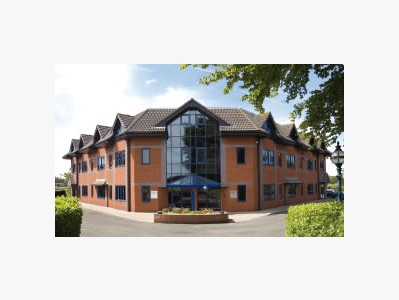
East Point Business Park in Oxford
Oxford OX4 6LB
East Point Business Park Oxford
East Point Business Park provides modern self-contained offices, including serviced and managed space, within close proximity to Oxford city centre. The business park features well-equipped and recently refurbished units. Office space at East Point is available for lease or purchase.
Facilities and Amenities
Office space at East Point Business Park ranges from 100 to 34,000 square feet. The business park consists of five office buildings, including self-contained office space at Orion House, Beaumont House, and Meridian House. Amenities at East Point included raised access floors for most units, suspended ceiling with LG3 lighting, and a comfort cooling and heating system. Each building is assigned dedicated car parking, and on-site parking is available at a ratio of one spot per 228 square feet.
Located within the business park is the Clarendon Business Centre. The centre features serviced and managed office space with the latest IT and telecommunications technology, 24-hour access and security, kitchen facilities, and meeting and conference facilities. The three-storey Sandford Gate building houses serviced and furnished offices suitable for between 1 and 50 workstations, with reception and administrative services. Managed office space is located at Heritage Gate.
Location and Transportation
Situated 3 miles south east of Oxford’s city centre, East Point Business Centre is accessible via the A4142 Oxford Ring Road. The site is less than a 20-minute walk from shops and other amenities, including Tesco, Sainsbury, and a Premier Inn hotel. The Oxford Ring Road provides links via the A40 to Junction 8A of the M40 motorway, as well as the A40 to Newbury and the M4 motorway. Frequent public transportation is provided to and from Oxford and other nearby communities by the Oxford Bus Company and Stagecoach services.
The business park is well situated close to some of England’s major economic centres, including Birmingham (70 miles from the business park) and London (61 miles). East Point is also within an hour’s drive of Heathrow Airport, one of Europe’s busiest airports with connections to every corner of the world.
At the time of publication Prime Office Space has East Point Business Park offices available to let here



 Newmachar, Aberdeen AB21 0UE
Newmachar, Aberdeen AB21 0UE Chiswick Park is a sprawling business park with a variety of amenities and state-of-the-art facilities. The environmentally sustainable site provides excellent transportation and public transit connections for visitors and workers, as well as a welcoming environment to work, relax, and do business. Between 2007 and 2011, Chiswick Park was named as one of the top 50 places to work by the Financial Times.
Chiswick Park is a sprawling business park with a variety of amenities and state-of-the-art facilities. The environmentally sustainable site provides excellent transportation and public transit connections for visitors and workers, as well as a welcoming environment to work, relax, and do business. Between 2007 and 2011, Chiswick Park was named as one of the top 50 places to work by the Financial Times. Large-Scale Construction Activity Set to Continue in the Education Sector in 2013
Large-Scale Construction Activity Set to Continue in the Education Sector in 2013